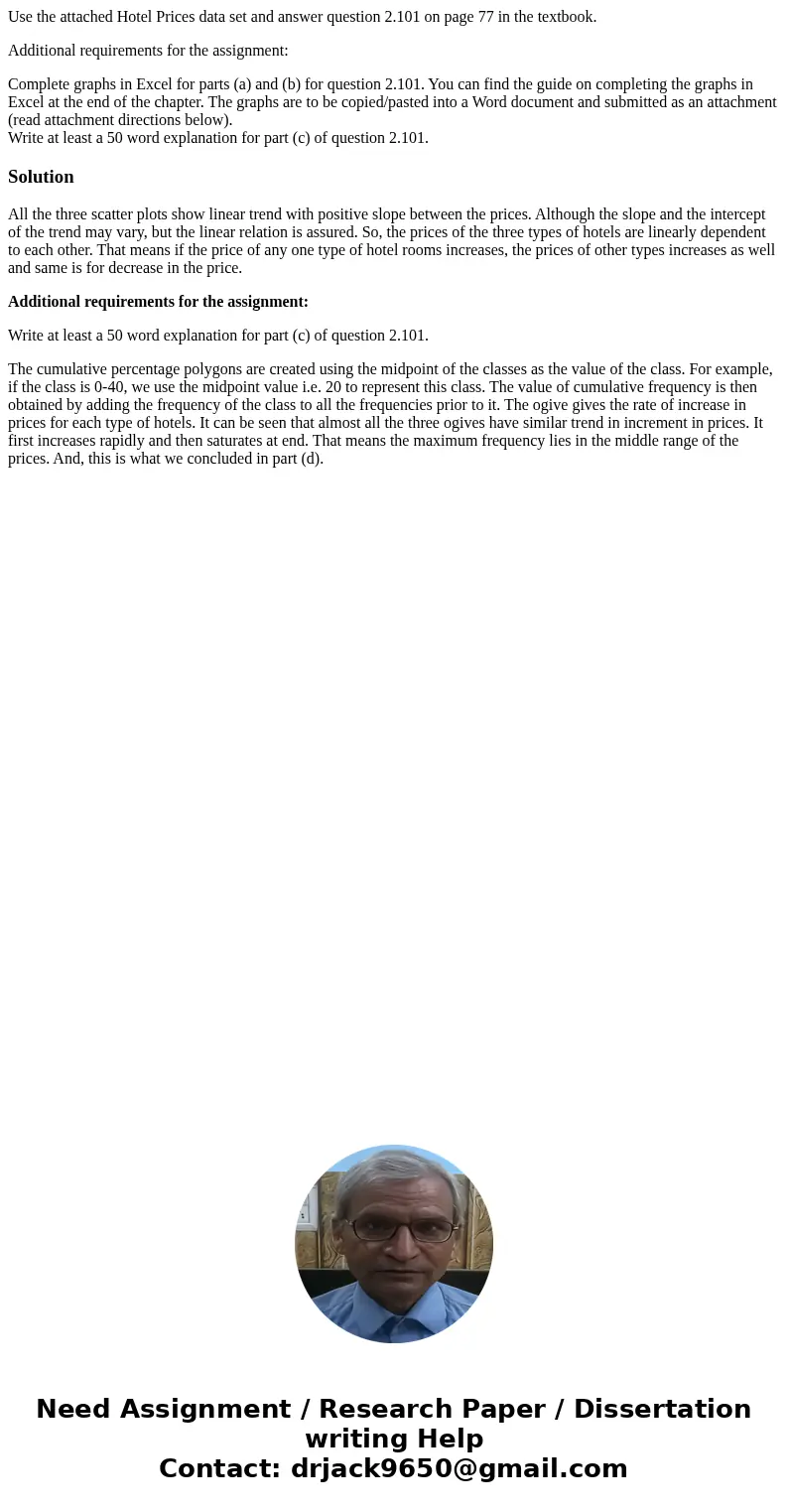Use the attached Hotel Prices data set and answer question 2
Use the attached Hotel Prices data set and answer question 2.101 on page 77 in the textbook.
Additional requirements for the assignment:
Complete graphs in Excel for parts (a) and (b) for question 2.101. You can find the guide on completing the graphs in Excel at the end of the chapter. The graphs are to be copied/pasted into a Word document and submitted as an attachment (read attachment directions below).
Write at least a 50 word explanation for part (c) of question 2.101.
Solution
All the three scatter plots show linear trend with positive slope between the prices. Although the slope and the intercept of the trend may vary, but the linear relation is assured. So, the prices of the three types of hotels are linearly dependent to each other. That means if the price of any one type of hotel rooms increases, the prices of other types increases as well and same is for decrease in the price.
Additional requirements for the assignment:
Write at least a 50 word explanation for part (c) of question 2.101.
The cumulative percentage polygons are created using the midpoint of the classes as the value of the class. For example, if the class is 0-40, we use the midpoint value i.e. 20 to represent this class. The value of cumulative frequency is then obtained by adding the frequency of the class to all the frequencies prior to it. The ogive gives the rate of increase in prices for each type of hotels. It can be seen that almost all the three ogives have similar trend in increment in prices. It first increases rapidly and then saturates at end. That means the maximum frequency lies in the middle range of the prices. And, this is what we concluded in part (d).

 Homework Sourse
Homework Sourse